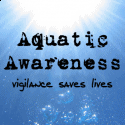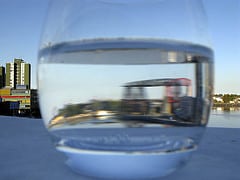The last two days have been spent at the Australian Water Safety Conference, organised on behalf of the Australian Water Safety Council by Royal Life Saving Society Australia, Austswim (the Australian Council for the teaching of Swimming and Water Safety), Surf Life Saving Australia and other member organisations.
The conference featured an International collection of delegates and presenters.
Social Media, Community and Effective Communication for Water Safety
In my role as the MD of the Samuel Morris Foundation I participated in the Plenary Panel discussion on Effective Communication. This panel looked at What is effective communication? The role of technology in effectively communicating water safety messages, the use of social media in our communication and a discussion of the state of core messages related to water safety. Part of my discussion on this panel was influenced by this great TED talk by Simon Sinek, and as result, I was encouraging people in the water safety industry to connect with peoples hearts, not their heads… or in Simon’s words to get to that “gut feeling” that the message is just right!
If you have been here a while you will know the story of How I got here and why I also presented a paper on “Non Fatal Drowning – A case study, advocacy and influencing water safety outcomes”.
Community readiness for drowning prevention
In this presentation I examined a model for community readiness for drowning prevention messages, the current state of community readiness, the contribution of Non-Fatal drowning statistics to community readiness (and how these statistics remain invisible in the current methods of statistical reporting), achieving the goals of the Australian Water Safety Strategy through partnership, collaboration and coalition, building new collaborations with emerging grassroots organisations, and discussed the due diligence checks that should be carried out to ensure that new organisations actions and ethics do not hold any surprises or any potential harm to your own organisation’s reputation. (a copy of the presentation is being prepared to be uploaded to the Samuel Morris Foundation website very soon).
Child drowning and non-fatal drowning continues…
Child drownings occur year-round and in developed countries like Australia and the United States drowning is one of the top two or three causes of accidental death for children aged 0-4 and in some jurisdictions, it is THE leading cause of accidental death, but as you can gather from the topic of my presentation this is only part of the picture because many more children are left disabled as a result of non-fatal drownings. (and the situation is far worse in developing countries) So no matter what season it is in your part of PLEASE take heed ……
- Always supervise children in and around water (keep 0-4-year-olds within arms reach)
- Provide effective well-maintained barriers to stop children getting into the water (four-sided isolation pool fencing, or fenced off safe play areas)
- Teach children water survival skills and to swim (commencing as early as possible)
- Have an emergency plan (knowing CPR may well be the difference between life and death for a child if all of the above fail)
Keeping all of our children SAFER
Water is lots of fun, but let’s make it SAFER for our children.

